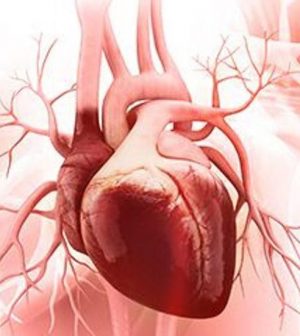- Navigating Your Midlife Crisis: Embracing New Possibilities
- City Raccoons Showing Signs of Domestication
- Mapping the Exposome: Science Broadens Focus to Environmental Disease Triggers
- One Week Less on Social Media Linked to Better Mental Health
- Your Brain Changes in Stages as You Age, Study Finds
- Some Suicide Victims Show No Typical Warning Signs, Study Finds
- ByHeart Formula Faces Lawsuits After Babies Sickened With Botulism
- Switch to Vegan Diet Could Cut Your Greenhouse Gas Emissions in Half
- Regular Bedtime Does Wonders for Blood Pressure
- Dining Alone Could Mean Worse Nutrition for Seniors
Surgeons Are Finding Microplastics in Human Hearts

Microplastics appear to be everywhere, including within the tissues of the human heart.
A new Chinese report describes doctors finding microplastics in heart tissue both before and after heart surgery. The researchers also noted there is evidence suggesting that microplastics may have been unexpectedly introduced during the heart procedures.
The researchers, who included Kun Hua and Xiubin Yang from Capital Medical University in Beijing, collected heart tissue samples from 15 people during cardiac surgeries. They also gathered blood samples from the patients both before and after surgery.
These plastic fragments, about the size of a pencil eraser or smaller, can enter the human body through mouths, noses and other body cavities. The full extent of microplastics inside the body isn’t known because most organs and tissues are fully enclosed within the body.
In this study, the team analyzed the samples with laser direct infrared imaging, identifying 20- to 500-micrometer-wide particles made from eight types of plastic. These included polyethylene terephthalate, polyvinyl chloride and poly(methyl methacrylate).
Most tissue samples had tens of thousands of individual microplastic pieces. The blood samples also contained plastic particles. However, the average size of those particles decreased after surgery.
The findings were reported recently in the American Chemical Society’s Environmental Science & Technology journal.
The study was small but provides preliminary evidence that microplastics can accumulate and persist in the heart. Invasive medical procedures are an overlooked route of microplastics exposure, the authors noted in a society news release.
More research will be necessary to fully understand the effects of microplastics on a person’s cardiovascular system.
More information
The U.S. National Oceanic and Atmospheric Administration has more on microplastics.
SOURCE: American Chemical Society, news release, Aug. 9, 2023
Source: HealthDay
Copyright © 2025 HealthDay. All rights reserved.










